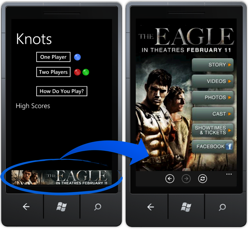Posted by vishal on 10:30
Intel is speeding up the release of tablet chips in an attempt to close the power and performance gap with ARM, which dominates the tablet market, analysts said this week.
Intel said this week that it was accelerating the release of its Atom chips for tablets, breaking a traditionally long wait cycle to upgrade the low-power processors. In 2013, the company will release an Atom chip for tablets that an Intel executive said will put the company's offering on par with ARM processors in performance and power consumption.
ARM Holdings, which licenses processor designs and architectures, virtually dominates the tablet market as well as the smartphone business. Apple's latest A5 tablet chip used in the iPad 2 includes an ARM processor, while Hewlett-Packard's upcoming TouchPad tablet runs on Qualcomm's Snapdragon processor, which also is based on the ARM architecture. Research In Motion and Motorola also are using ARM processors in tablets.
The tablet market is new for Intel, and the company released its first true Atom tablet chip, code-named Oak Trail, at the Intel Developer Forum in Beijing this week. The company also laid out the road map for future Atom chips, which includes an Oak Trail successor called Cloverview. Cloverview will be made using a 32-nanometer manufacturing process. Further information about the chip will be discussed later this year.
About 35 Oak Trail devices are scheduled to go on sale next month. Companies including Fujitsu, Samsung and Lenovo are expected to ship tablets that will run operating systems including Microsoft Windows 7, Google's Android and Intel's Meego.
Intel will also reveal new tablet and netbook chips in 2013 that will be made with its advanced 22nm process, at which time it will be on par with ARM for power and performance, said Bill Kircos, general manager of marketing at Intel's netbook and tablet group, in an interview with the IDG News Service last week.
Intel's chips are more power-hungry than ARM processors, which are used in tablets such as Apple's iPad and Samsung's Galaxy Tab. Kircos said Intel will close the power and performance gap through smarter chip design and rapid advances in manufacturing. Intel advances its chip manufacturing process every two years and invests billions to improve chip performance and reduce leakage.
Intel's upcoming low-end smartphone chip, code-named Medfield, is also being extended to tablets, said Claudine Mangano, an Intel spokeswoman. Intel wants to offer a range of chips so it can provide tablet makers with more choice when building devices. Smartphones with the Medfield chip will be released later this year.
Intel needs to move quickly in tablets, which are eating into the sales of netbooks and low-end laptops, a staple of Intel's business, said Nathan Brookwood, principal analyst at Insight 64."Nobody expected the iPad to be the phenomenal success it has been," Brookwood said.
Intel is the dominant player in the PC market, with its chips going into more than 80 percent of the world's PCs. But PC shipments have declined due to a growing interest in tablets, according to surveys by IDC and Gartner this week. Worldwide PC shipments declined by 3.2 percent in the first quarter of 2011 compared with the first quarter of 2010, according to IDC. The research company estimates that tablet shipments will reach 44 million units this year, up from just 18 million last year.
Intel took some time to assess the tablet market, but its accelerated strategy should bring it closer to ARM on power consumption, a key variable.
"People don't value the performance as much as they value the battery life in the [tablet] space," Brookwood said.
The rapid progress in Intel's manufacturing process will leave "ARM suppliers scrambling to keep up with the process wars," said Jack Gold, principal analyst of J. Gold Associates, in a research note on Thursday.
"Once Intel gets to 32-nm, and then advances to 22-nm, we expect them to be as energy efficient and effective as ARM," Gold wrote.
Intel will also differentiate its chips through features such as integrated security and specialized accelerators to improve multimedia performance, Gold said.
Intel has also helped to extend a variety of operating systems, such as Google's Honeycomb, to work on its x86 Oak Trail tablets. The upcoming Windows OS will also work on both Atom and ARM processors, so the competition there will be on even ground, Gold said.
"It's not that the ARM vendors ... won't be successful. It's that they now have a formidable competitor with attractive products and huge manufacturing capability," Gold wrote.
As Intel draws closer, chip makers that license ARM processors are also improving performance while reducing power consumption, Insight 64's Brookwood said.
ARM has already announced the Cortex-A15 chip design, which is faster and more power-efficient than its predecessor, the Cortex-A9. Qualcomm, which makes the Snapdragon processor, and Nvidia, which offers the Tegra processor, will also offer chips made with 28-nm processes by early next year.
ARM processors are designed with smartphones in mind, which gives the platform an architectural advantage to cut power consumption, Brookwood said. Intel's chip designs originate from PCs, and the company may find it difficult to reach deep down to cut lower levels of power consumption.
"Intel would have to be better [to beat] ARM. They are the challenger," Brookwood said.














